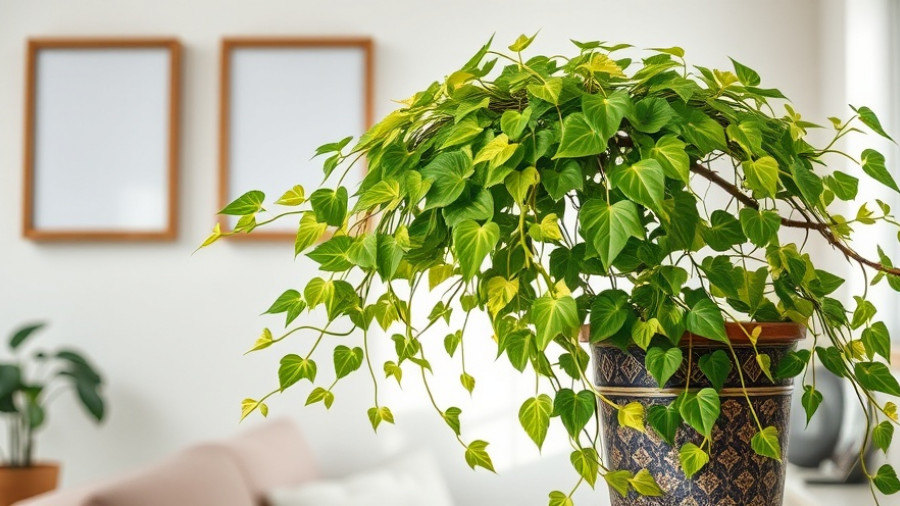
Discover the Allure of Devil's Ivy: Your New Green Companion
If you're looking to breathe life into your home without the burden of high-maintenance plants, Devil's Ivy, also known as Pothos, might just be your perfect match. With its cascading, glossy vines and heart-shaped leaves, this houseplant not only enhances your decor but also brings a multitude of environmental benefits, making it a favorite among both novice and seasoned plant enthusiasts.
The Charm and Versatility of Devil's Ivy
One of the most endearing qualities of Devil's Ivy is its versatility. This plant thrives in varying light conditions, from low light to bright indirect sunlight, making it an ideal addition to any room in your home. Place it in hanging planters to create a tropical waterfall effect or allow it to climb trellises to add dimension to your space. The plant's ability to adapt seamlessly to different environments means that it can effortlessly elevate the aesthetic of any area—from a cozy corner in the living room to a vibrant touch in your office space.
Beyond Looks: The Hidden Powers of Devil's Ivy
Devil's Ivy is not just about aesthetics; it serves multiple practical purposes. According to the renowned NASA Clean Air Study, Pothos is highly effective at purifying indoor air by removing toxins like formaldehyde, benzene, and xylene. This not only improves the air quality in your home but also contributes to a healthier living environment, crucial for maintaining focus and reducing stress.
The Benefits of Clean Air and Mood Enhancement
Research indicates that having plants like Devil's Ivy in your space can significantly reduce stress and enhance mood. The presence of greenery creates a calming atmosphere, encouraging productivity and creativity. Thus, incorporating this plant into your workspace can lead to better performance and well-being. Furthermore, the natural humidity control it provides can be a boon in dry environments, making your home more comfortable.
Simple Care Tips for Your Devil's Ivy
Caring for your Devil's Ivy is remarkably straightforward. Here are key tips:
- Watering: Allow the top inch of soil to dry between waterings to prevent root rot. In winter, reduce your watering frequency as the plant enters a dormancy period.
- Light: Bright, indirect light is ideal, but be mindful to avoid direct sunlight to prevent leaf scorch.
- Humidity: This plant thrives in humidity, so consider misting its leaves regularly or using a humidifier if your home is particularly dry.
With these simple guidelines, even first-time plant parents can keep their Devil's Ivy looking lush and vibrant.
Expansion through Propagation
One of the most enjoyable aspects of caring for Devil's Ivy is how easy it is to propagate. Simply take cuttings of healthy stems, place them in water or soil, and soon you'll have new plants to share with friends or enhance your own space. This ease of propagation adds to its charm, making it a great way to cultivate a home filled with greenery.
Combatting Common Issues
While Devil's Ivy is hardy, common issues like yellowing leaves or leggy growth can arise, often due to improper care. Be attentive to your plant's environment; if leaves start to yellow, reassess your watering schedule and light exposure. With minor adjustments, your plant can regain its vitality.
Final Thoughts: Why Every Home Deserves a Devil's Ivy
In conclusion, the Devil’s Ivy stands out as not just another plant but a multifaceted addition to your home that provides beauty, air purification, and health benefits. Its unshakeable resilience against neglect makes Pothos a symbol of good fortune in various cultures—so why not bring one home? You'll not only beautify your space but also contribute to a healthier indoor environment.
So go ahead and welcome this angelic houseplant into your life—it’s time to make your home a greener, healthier place!
 Add Row
Add Row  Add
Add 




Write A Comment